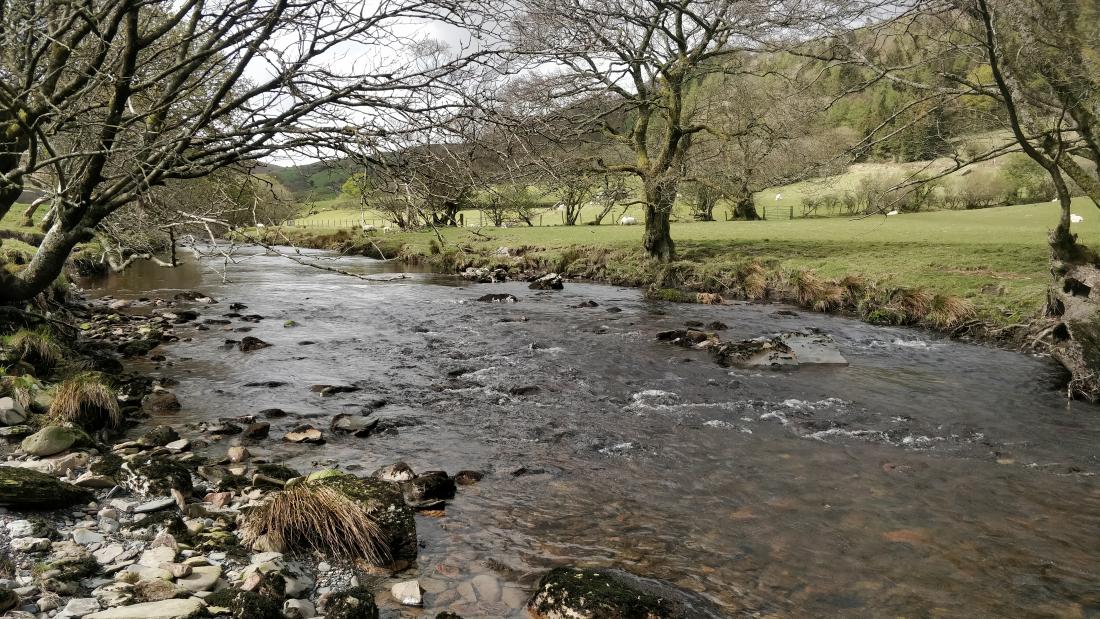The River Conwy in north Wales has been surveyed by scientists to establish new genetic information that can be used to monitor freshwater rivers worldwide. The work, involving multiple institutions, and led by Bangor University, Cardiff University, University of Birmingham and the UK Centre for Ecology & Hydrology (CEH) is published in Nature Communications .
Human activities such as climate change and habitat modification are causing populations of freshwater species to decline around the globe. Conservationists and scientists therefore need to conduct baseline ecological surveys, in order to monitor and improve these environments, but traditional methods of conducting freshwater surveys rely on individual expertise and can be time-consuming.
Sampling the water and sediment for trace DNA can provide a far more in-depth understanding of the species connected to that environment. Environmental DNA, or eDNA, can not only reveal the presence of species too small to see with the human eye, it also detects larger animals and insects who have moved through that space, from salmon to dragonfly larvae, because of the tiny fragments of DNA they leave behind in the environment.
eDNA analyses are already being used in lakes and the sea. To be used effectively in rivers, one question needed resolving - how far downstream does eDNA travel before it is no longer detected?
By intensely sampling the River Conwy and comparing resulting data with other comparator rivers in Wales (Tywi), England (Gwash), Switzerland (Glatt) and the USA (Skaneateles), the team from Bangor University, Cardiff University, University of Birmingham and UKCEH have answered the question.
The work has revealed that eDNA does not survive much beyond a kilometre downstream. This means that ecologists can be sure that the species detected within an eDNA sample are representative of where the water sample was taken, and not of habitats many kilometers upstream.
Dr William Perry a Postdoctoral Research Associate at Cardiff University’s Water Research Institute and lead author of the study, said,
“Results from this paper make it possible for ecologists and others to begin using eDNA surveys with more confidence in rivers worldwide. It demonstrates that getting comprehensive data on what organisms are in our rivers is in the realms of the possible, giving us a fighting chance in preventing the damaging impacts caused by human activity.”
Prof. Simon Creer, leader of the Molecular Ecology and Evolution Group at Bangor University and co-ordinator of the Natural Environmental Research Council Highlight Topic grant that led the consortium said,
“The only way to fully understand the travel and persistence of eDNA in real ecosystems was to conduct this style of study - regular sampling of taxa from across the tree of life, from multiple spatial scales and frequent times across an annual cycle. Our results reveal the relationship between eDNA traces and the thousands of animals resident in river ecosystems across the globe, thereby validating the use of riverine eDNA analyses to assess biodiversity at the ecosystem level”.
Prof. Jack Cosby, biogeochemist at UKCEH and co-author on the work, said,
“The project highlights the increasing importance of eDNA as a tool in the study of ecological, biogeochemical and hydrological processes from gene to landscape scale. Such integrated approaches to environmental research provide a holistic understanding of how pressures influence our natural resources and help to inform policy and management practices to protect them.”
Baseline established for riverine eDNA transport


